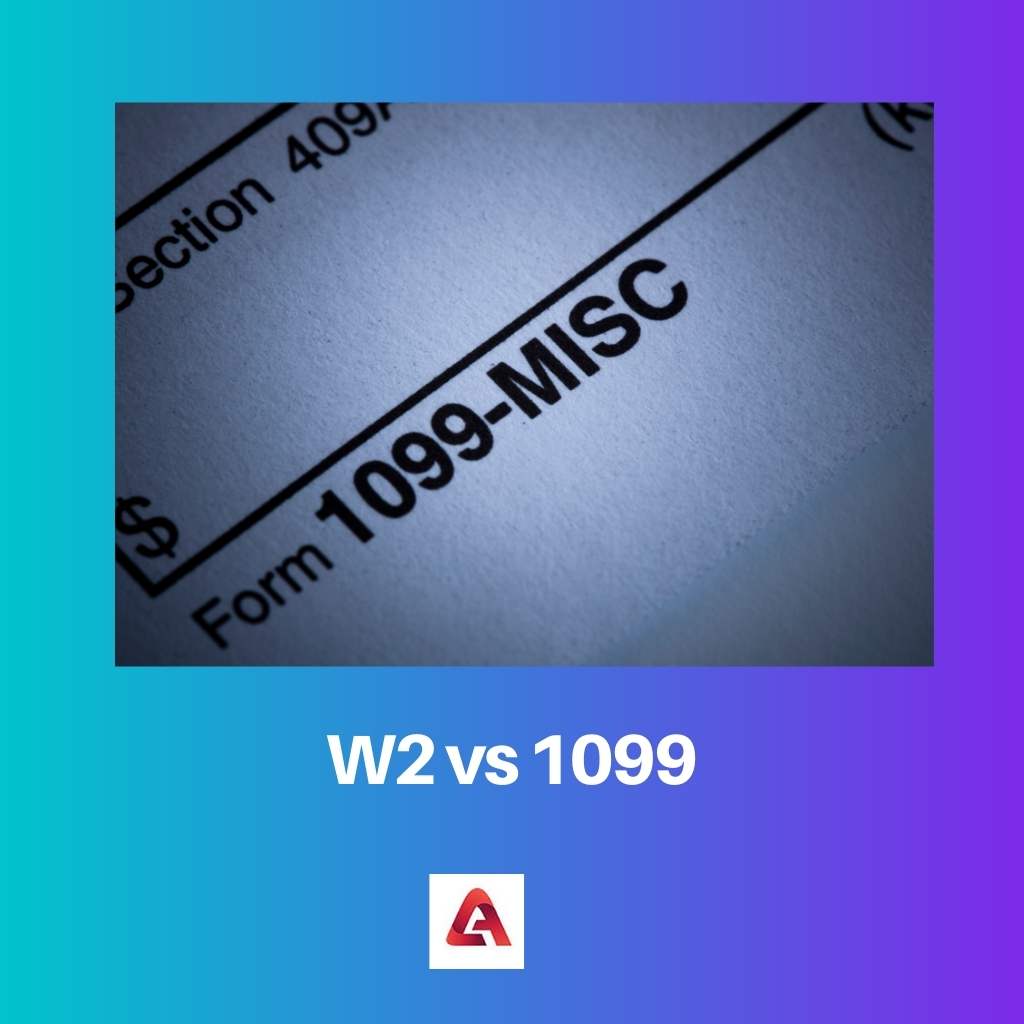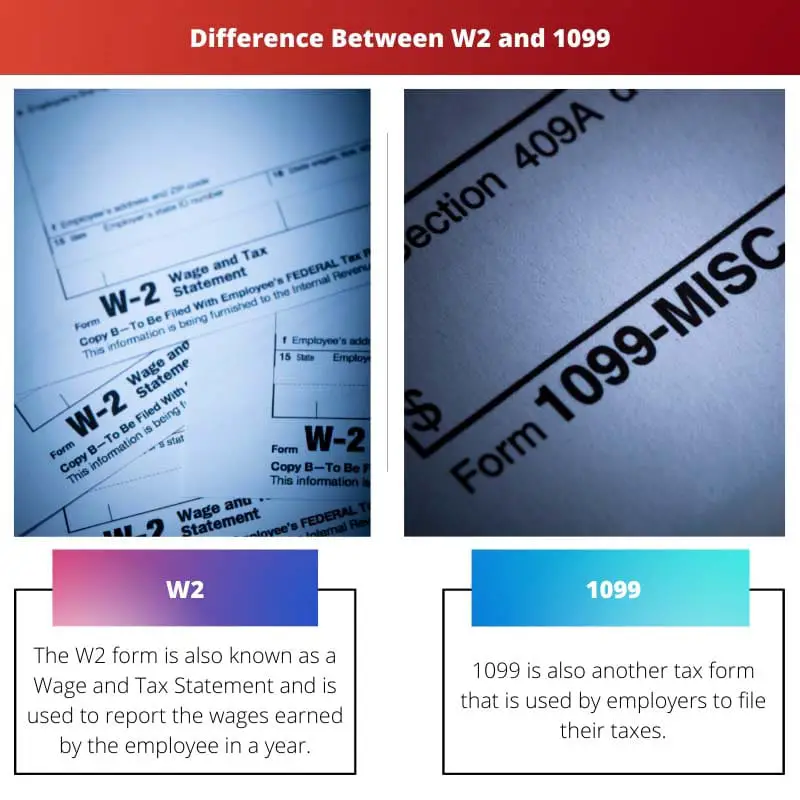W-2 workers are people who are employed under someone; they are the employees. 1099 is for people who are self-employed or employers.
Key Takeaways
- A W2 is a tax form that employers use to report an employee’s income and taxes withheld to the Internal Revenue Service (IRS).
- 1099 is a tax form businesses use to report income paid to independent contractors and freelancers to the IRS.
- The main difference between a W2 and 1099 is that the former is used for employees, while the latter is used for independent contractors and freelancers.
W2 vs 1099
The difference between W2 and 1099 is that W2 tax forms are used to report the wages of employees, whereas 1099 tax forms are used to report the wages of employers or self-employed people. Both of these are forms of tax, but the people concerned about it are different.

W2 is a tax form available for employees or people working under any institution. W2 employees are typical salaried people.
1099 is also a tax form, but the concerned person is an independent worker who provides certain services to other employees.
Comparison Table
| Parameters of Comparison | W2 | 1099 |
|---|---|---|
| Tax Differences | Their tax is different as they are the employees. | 1099 worker pays more amount as their income is more. |
| Time of Payment | It is paid monthly and is withheld from the salary itself. | It is paid annually and only then the form is received. |
| Provided by | W2 forms are provided by the employer to the employee. | Employers must get a form for themselves and any other contractors they are working with. |
| Employment | Works under someone and is employed on contract. | Business owners who employ people to help in their work. |
| Usage | Used for reporting the paid wages of employees annually. | Used for recording wages not paid by the employer. |
What is W2?
The W2 form is also known as a Wage and Tax Statement and is used to report the wages earned by the employee in a year.
W2 is used to record the wages earned by the employee from the employer over the span of a year. The employer needs to have these records and keep a check on the tax information through this form.
The non-cash payments are also recorded in the form. It shows the amount one earned over the span of a year and how much of it is spent on the taxes submitted to the IRS and state.
The form requires information about the taxes paid to the IRS, Medicare income, social security, and state taxes. The completed form is then submitted by the employee to the IRS for tax filing purposes.
The employer is obliged to provide the employees with the W2 forms each year, and they also need to fill the form with the necessary insurance information.

What is 1099?
1099 is also another tax form that is used by employers to file their taxes. The form records the income an individual earns by being an independent contractor or employee.
There are different types of 1099 form types, and the employer needs to see for themselves which form is suitable for them. The forms must be provided to the contractors by the employer of the company.
The 1099 worker is an individual who is self-employed and might be employing other people to help in their work. They can be employers and independent workers as well.
These people may work with multiple clients or companies, and hence, they need to pay for their insurance themselves. In this light, 1099 worker needs to report their tax to the IRS themselves.
Main Differences Between W2 and 1099
- W2 forms are provided by the company, and they need to fill in too to keep an eye on the expenses and income of the employees.
- W2 workers are employed under someone, and hence, they receive insurance from the company. On the contrary, 1099 workers are independent of such companies, and hence, they need to take care of such expenses by themselves.




